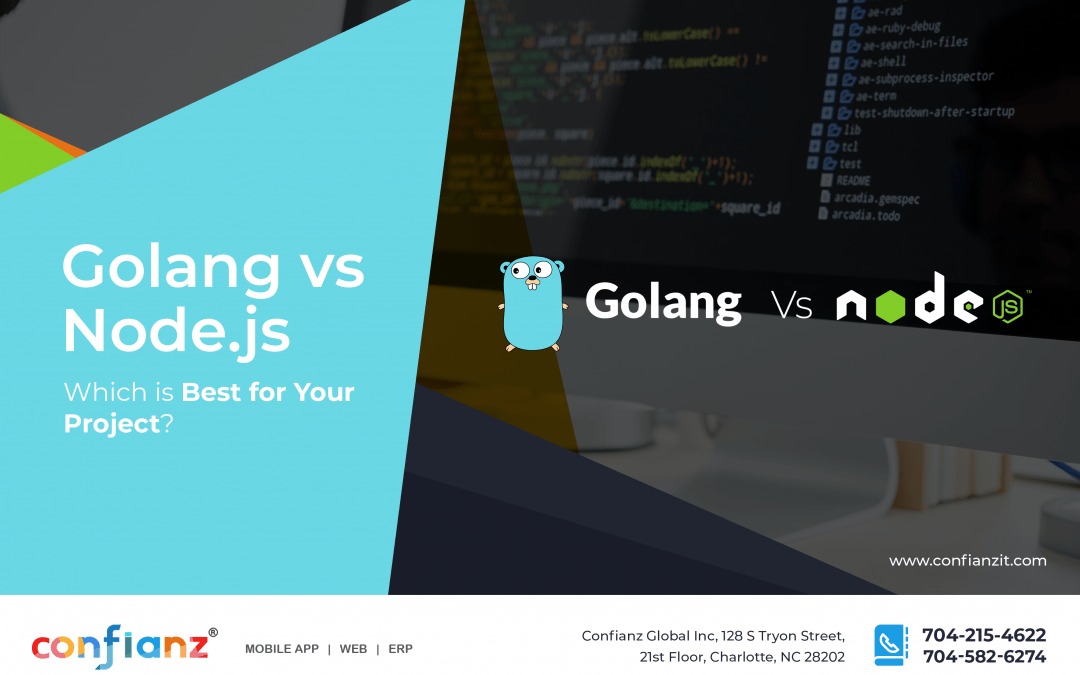A lot of popular programming languages are very, very old. They’re standards for a reason, but if you’re ignoring what the 21st century has to offer, you’re missing out. Nowadays, there’s a vast range of options for web development, but that means you have to choose.
If you want to hire a full-stack developer (someone who can develop client and server software), you’ll need to have a plan for each step of the project. When choosing a front end, you need to have the back end in mind.
In 2009, two noteworthy tools were released for back-end development: Golang and Node.js. In this post, we will be exploring and comparing Golang and Node.js to help you get a handle on which is the better choice for your project.
What is Golang?
Golang is a relatively new programming language developed at Google by Robert Griesemer, Rob Pike, and Ken Thompson. Its official name is Go, but since it’s so often followed by “language,” it’s often called Golang.
Go is a general-purpose language created with modern software development in mind. It combines advanced simplicity, efficiency, and power. It addresses the shortcomings of other languages. It’s meant to be fast, lean, easy to learn, and cross-platform.
Golang is a statically typed language with garbage collection and structural typing. It has been open-sourced ever since its inception so that developers could develop it through GitHub’s collaborative model.
In this sense, it’s an interactive language with an interface similar to C with some non-standard syntaxes like pointers and a built-in concurrency model for code execution on multiple processors.
Unlike Java, Golang is imperative, meaning that its code is always written as an instruction. As a result, it tends to have shorter code that’s easier to read.
Since it was explicitly built to be easy to learn, the Language Specification is a tight 50 pages instead of hundreds like many other programs.
Who Uses Golang?
Golang is best for back-end development.
It’s no surprise that Golang is one of the most successful alternative programming languages in recent years, given Google’s involvement. But Google isn’t the only big-name company to use Golang.
As the fifth most popular programming language, Golang is used by Uber, Twitch, LinkedIn, Netflix, Trello, and Paypal.
Golang has a robust community. It’s one of the most popular languages on Github, with over 2 million projects.
Pros of Golang
- Makes it easy to build programs that interact with the file system and network sockets (including HTTP) and handle web requests.
- Lets you write code that’s clear, understandable, and maintainable.
- Has a small memory footprint: Golang can be compiled into binaries at least 40% smaller than those written in other languages like Java or C++
- Developed by Google, which gives it credibility in the market.
- Can be used for small and large projects without compromising performance or scalability
Cons of Golang
- Generics exist but are not as powerful as generics in other languages because Golang does not use monads, and there is no concept of lambda functions.
- Struggles with interfaces and structs, which causes a lot of errors and has more boilerplate code than necessary.
- It may be harder to find programmers since it’s less popular than older languages.
- Has issues with visualization.
What is Node.js?
Node.js is a server-side programming language that Ryan Dahl created in 2009. It allows developers to create powerful web applications with a rich user experience.
A JavaScript runtime environment with an event-driven I/O, Node.js lets you build rich and scalable apps, such as real-time chat apps, single-page applications, and games. It quickly became very popular because of all its features.
Node uses JavaScript on the front end and focuses on the I/O on the back end.
Node.js has many frameworks, such as Express, Loopback, and Restify. Node also has packages such as CacaoJS, Mootools, MochaJS, RequireJS.
An example of a framework that can be used with Node is ExpressJS, a web framework used to build RESTful JSON APIs.
Node.js uses an asynchronous event-driven non-blocking I/O model, making it lightweight and efficient – perfect for data-intensive real-time applications like chat and live streaming apps.
It is open-source, which means there are no license fees, and the code is publicly available on GitHub. As a result, anyone can use Node.js without any legal worries or restrictions.
Node.js has an extremely low overhead, which means it’s excellent at building fast data-intensive web services like chats, live streaming video feeds, or even games for your website visitors to play with their friends!
Who Uses Node.js?
Node.js is wildly popular among developers. According to StackOverflow, over half of the developers surveyed have reported using it in their projects.
It’s so popular that many of the same companies who use Golang also use Node.js. For example, Uber, LinkedIn, Netflix, Trello, Paypal, NASA, and Microsoft all use Node.js.
Pros of Node.js
- Ideal for developing fast and scalable network applications.
- Open-source and cross-platform, meaning developers can port their codes to any computing platform without worrying about incompatibility issues.
- Has a full suite of built-in data streaming tools such as zlib (deflate or gzip) for performance optimization or even compression API.
- Has a great package management system and a broad ecosystem of open source libraries.
- Asynchronous I/O model allows for non-blocking input/output operations, which makes it ideal for web servers where many clients are requesting data simultaneously.
Cons of Node.js
- Doesn’t offer many debugging tools, and it can be hard to figure out what’s going wrong in your code when it crashes.
- Not as mature as other languages.
- Can be hard to set up some parts of the platform on Windows.
- Language syntax has often been changed without any notice from the Node team.
- Can be hard to find good examples for some day-to-day tasks.
- Lacks good documentation.
Conclusion
Both Golang and Node.js are fantastic options for back-end development. Node.js is great for web applications with a lot of real-time data, while Golang provides speed and safety without sacrificing productivity.
Need help deciding which programming language is best for your company or project?
If you’re looking for Software or Custom Web Development services in US, look no further! Confianz Global can help. Our experts are here to advise you every step of the way.
So give us a call today!







